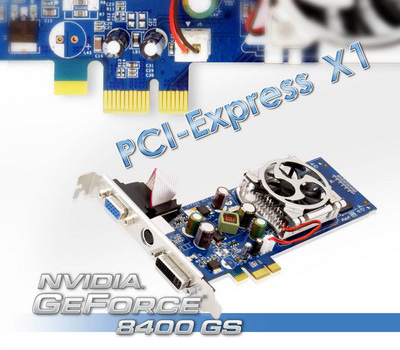Taiwan's SPARKLE Computer company today announced a new range of graphics cards that promise to bring high-end features such as Shader Model 4.0 and NVIDIA's PureVideo HD technology to generic PCs.
The surprise upgrade solution comes in the form of an NVIDIA GeForce 8400GS graphics card equipped with a PCIe x1 interface, as opposed to the common PCIe x16.
SPARKLE states that the card offers upgrade possibilities for generic PCs, as well as providing a budget-gaming solution for users with only PCIe x1 slots available.

The card offers a core frequency of 567MHz and 256MB or 512MB of DDR2 memory clocked at 900MHz. SPARKLE is so confident in the card's appeal that it's offering eight different models - each providing varying amounts of memory and a choice of passive or active cooling.
It could have its uses, and certainly provides a budget solution for users looking to add a second graphics card for a multi-monitor setup. No word on pricing yet, but expect availability soon.
Official press release: SPARKLE Presents GeForce 8400 GS PCI Express x1 Graphics Cards













